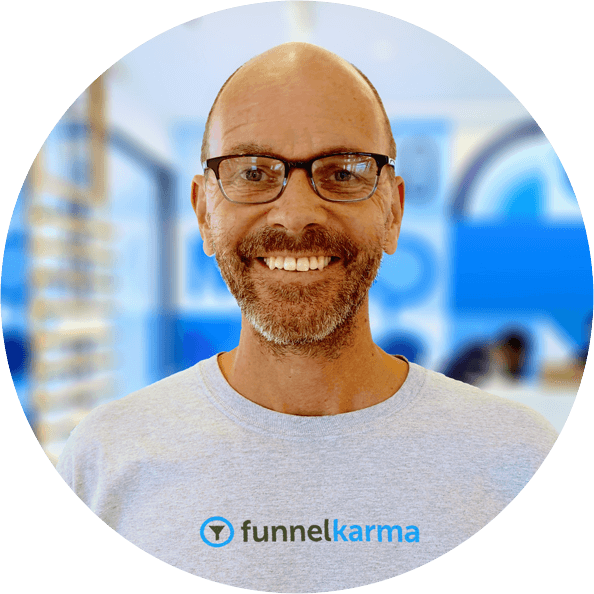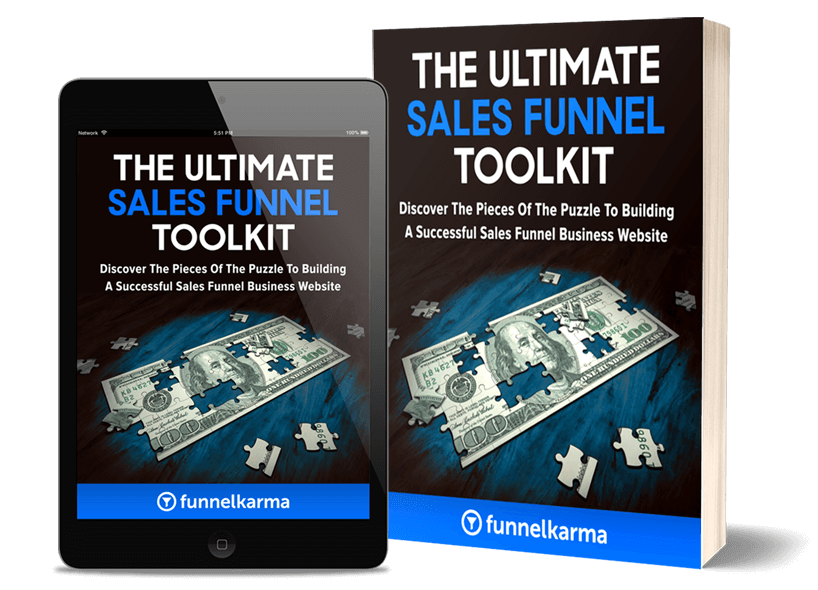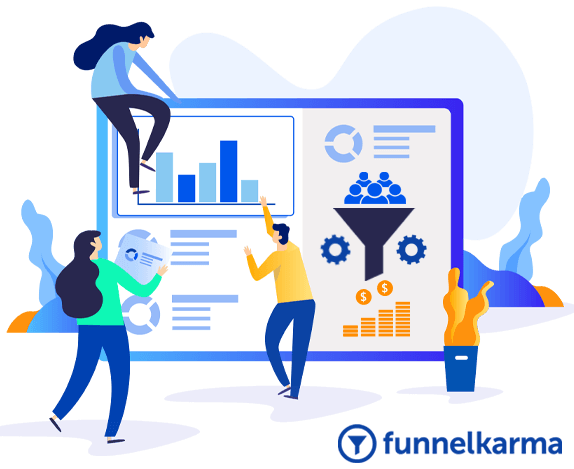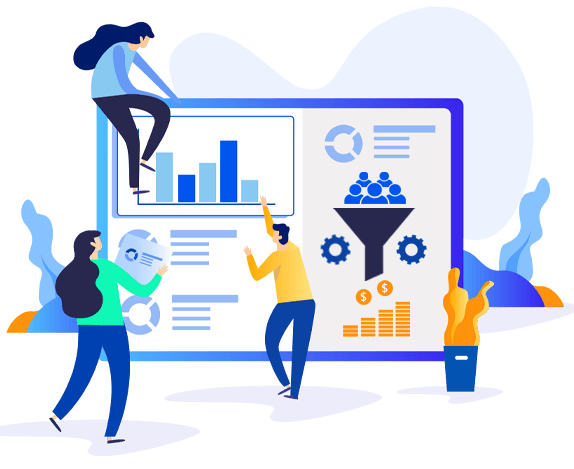Landing Pages: Easy Beginner’s Guide [2024]
A landing page is the single best way to get your visitors to take action and buy.
If you’re not using one, you’re missing out on a lot of money!
I’m not going to sugarcoat this…
If you want to grow your business and succeed online, then you need to start using landing pages. It’s that simple.
Why?
Because landing pages are like little billboards for your business. They help you convert visitors into paying customers.
And, they do it extremely well.
In fact, a landing page is one of the most effective conversion tools in your entire arsenal.
Think of a landing page as the gateway to your success. It’s the moment of truth…
… Will your visitor take the next step and buy what you’re selling?
Or will they move on and never come back?
I’m not talking about those boring pages that just have a few links and a phone number on them.
No, I’m talking about landing pages that help you connect with your audience in an intimate way…
… landing pages that make your customers feel like they’re getting something special when they visit…
And the type of landing page that’s focused entirely on one thing – getting people to take action!
So why don’t more people use landing pages?
Well, to many, they’re intimidating! They seem like they take so much time and effort, and may not actually be worth it in the end.
The truth is, a landing page is not as hard as it sounds!
Landing pages are simple to create and promote.
And once you have one… the results will be worth it.
That’s why I’ve put together this easy landing pages for beginners guide to help you with the basics.
I’ll go over what is a landing page, how it works, and why it’s important. I’ll also show you how to create your own landing pages in just a few simple steps.
Ready to get your customers to take action?
Great! Let’s begin.
What Is A Landing Page?
A landing page is a web page that is designed to convert visitors into customers.
It is usually a standalone page that focuses on one goal, such as:
- Collecting a lead for your business
- Selling a product or service
- Promoting an event or an offer
In digital marketing, landing pages are also known as squeeze pages. This is because their main function is to “squeeze” value out of your visitors.
How A Landing Page Works
A landing page works by appealing to your visitor’s emotion, offering them something of value, and then asking them to take action.
This action could be:
- Giving their email address or a phone number
- Purchasing your product or service
- Registering for your webinar or event
For a landing page to be effective, it needs to be simple and focused on just one action.
In addition, for landing pages to work, they should give your visitors a very clear idea of what you’re offering them – without overwhelming them with information.
Landing Page vs. Website: The Difference
Here’s the difference between a landing page and a website in basic terms.
A landing page is a single web page to promote a specific service or product. It focuses on one thing, and has a clear call-to-action (CTA). It typically has no distractions like navigation menus or unnecessary links.
In contrast, a website is a full-fledged online presence that contains multiple pages and sections that are all interconnected and linked to each other.
A website can have many landing pages, and each of those landing pages can have its own unique purpose.
Need Expert Help Turning Browsers into Buyers?

Let’s Personalize Your Sales Funnel Together!
Ready to Master the Visitor-to-Customer Dance and Elevate Your Online Success?
Why A Landing Page Is Important: The Benefits
There are many benefits of using landing pages. Here are some of the most important ones:
More Leads
A landing page is a great place to capture leads. It’s easy for visitors to provide their name and email address in exchange for valuable content, like an ebook or webinar replay – but only if you ask correctly.
Increase Conversion Rates
Landing pages can increase your conversion rates. A well-designed landing page makes it easier for visitors to see what they need and take action without distractions.
This increases the chances that they will complete their desired action on your site, such as subscribing to your email list or purchasing your product.
Target Your Audience
Landing pages help you to target your audience more precisely.
Since each landing page is designed to address a specific goal, you can ensure you are targeting people who are most likely to buy your product or use your service.
Test Your Marketing Strategy
A landing page can be used to test sales content and see which messages resonate best.
For example, you can try different messaging and headlines on different landing pages.
Then you can measure what works best by tracking how many people take the action you need of them – like giving their email address or making a purchase.
Types Of Landing Pages (with Examples)
Landing pages are the first step in your sales funnel.
They’re the front door to your website. They serve as a place where you can collect leads and conversions from all the visitors (or traffic) who are interested in what you have to offer.
Although there are main different types of landing pages, they really fall under two main categories:
- Lead Generation Pages
- Sales Pages (also called Product Landing Pages)
Each one is designed with a specific purpose in mind, so it’s important to know which type of landing page will work best for your business.
Lead Generation Landing Pages
Lead generation landing pages are designed to convert visitors into leads.
They’re typically focused on gathering information about someone who is interested in your product or service, but hasn’t made a purchase yet.
Lead generation landing pages usually contain lead capture forms that ask for contact information like name and email address.
They also contain some type of offer that encourages people to opt-in for more information about your company or product.
You will typically see lead generation landing pages used for:
- Free product trial signups
- Newsletter signups
- Event registrations
- Resource downloads (ebooks, white papers, reports etc)
- Promotional contests
- Customer feedback and reviews
- Charity or non-profit donations
Lead generation landing pages usually include call-to-action buttons like “Subscribe Now”, “Click To Get Your Free Ebook”, or “Try It Free Today”.
Sales Pages (Product Landing Pages)
Sales pages, or product landing pages, are used by companies selling products or services who want to convert website traffic into paying customers in one step.
They’re called sales pages because they encourage people who have already expressed an interest in a product or service, by searching for it online, to complete the sale – or at least give them an opportunity to do so.
Sales pages are very common in online shopping and ecommerce.
Sales pages usually include calls-to-action buttons like “Buy Now” or “Add To Cart”.
For more information about how to drive traffic to a sales funnel, be sure to check out our guide:
How To Create A Landing Page For Beginners
Creating a landing page is an easy way to get started with your online business.
Here are 6 steps to help you create a landing page for beginners.
1. Choose A Platform To Build Your Landing Page
The first step in creating a landing page is to choose the platform you want to use.
There are many different platforms, but for beginners we recommend ConvertKit or GetResponse.
With ConvertKit you can easily create beautiful landing pages in minutes for free. No coding is necessary. And your landing pages will look good on all devices.
With GetResponse, you can also create free landing pages. However, you’ll have more flexibility in your design than you will with ConvertKit.
This extra creativity comes with a little bit more of a learning curve but its still very easy to set up. And its worth the effort for the longer term.
Got The Vision But Need The Right Tools?

Unlock The Toolbox That Turns Browsers Into Buyers
Dive into our Ultimate Sales Funnel Toolkit for FREE and grab our exclusive selection of 37 pivotal sales funnel tools – every tool a game changer for savvy professionals!
2. Find A template That Fits Your Needs
The next step is to find a landing page template that fits your needs and business goals.
Both ConvertKit and GetResponse have landing page templates for beginners and pros alike. Each one can be customized to suit your individual preferences.
ConvertKit has over 50 templates that are simple yet professional and effective.
GetResponse has over 200 templates that are more detailed. They can also can be customized very easily with its drag-and-drop landing page builder.
3. Set Up Your Account And Start Designing
Next, simply pick one of the platforms and sign up for an account.
Both of these landing page platforms are free to get started, so there’s no reason not to try them out.
Both platforms will also walk you through the process of setting up an account. They’ll both guide you through getting started with designing your first landing page.
When you’re ready to start designing, select one of the templates offered by your platform of choice.
These templates already give you all the elements needed to build a great looking page without having any background in design or code writing.
All you have to do is choose your colors, add photos, edit your custom opt-in form, and add your sales copy. All without writing any code… It’s that easy!
4. Turn On Your Analytics To Track Performance
Once you have edited your landing page template, the next step is to make sure you have your analytics turned on to track performance.
Both platforms come with the ability to analyze your landing page’s performance, so it’s important that you learn how to use this data!
You can track the number of visits, clicks, and conversions for each version of your landing page.
With GetResponse, you can also build multiple versions of a page and run A/B tests to see which page works best!
You can also integrate the platform with Google Analytics (and other tools) so that you have all of your data in one place.
5. Share Your Link To Your Landing Page
Congratulations! You’ve created your first landing page.
Now it’s time to share it with the world.
There are three main ways you can do this:
Share Your Link On Social Media
Once you’ve created your landing page, copy and paste your landing page link into an appropriate post on your social media channels (Facebook, Twitter, LinkedIn etc.).
You should also add a blurb about what’s on your landing page and why people would want to check it out!
Email Your Link To Your List Of Subscribers
If you have a mailing list of customers or potential customers, consider sending them an email that has a link to your new landing page.
Just make sure that you also include a quick explanation of what’s there and why they should check it out to wet their appetite.
Add Your Link To Your Newsletter
If you have a newsletter that goes out quarterly or monthly, consider adding the link to your landing page in one of those newsletters.
Once you share the link, you should start seeing traffic come into your landing page. Just double check that you’ve shared the right link!
6. Monitor Your Performance And Adjust Accordingly
When you start receiving traffic to your landing page, you’ll want to monitor its performance in your platform’s analytics dashboard.
You can see how it’s working and converting over time. Then you can simply adjust accordingly!
If you like most people and you’re creating landing pages to capture leads, then both of these platforms will automatically collect all the opt-in information you need.
You can then access all this data from your dashboard and use it for your email marketing campaigns.
And that’s it!
Creating effective landing pages is really that simple.
Conclusion
Have you ever wondered why some businesses are more successful than others?
Of course you have! We all want to be more successful.
Well, there’s one thing that makes a huge difference… landing pages.
Why?
Because landing pages help you convert more visitors into paying customers.
Landing pages also help you generate leads and get more people to contact you.
And, landing pages make it easier for your customers to do business with you by giving them the information they need right away – so they don’t have to waste time searching for what’s relevant.
So now that YOU know how easy it is to create your first landing page, there’s no excuse not to get started!
What are you waiting for? Go and have some fun building your some landing pages today!
Landing Page FAQs
Here are some frequently asked questions about landing pages that I often get asked by beginners:
Disclosure: This content is reader supported, which means that if you click on some of our links then we may earn a small commission at no cost to you. You can read our disclaimer for more info.
Want To Learn More About Sales Funnels?


